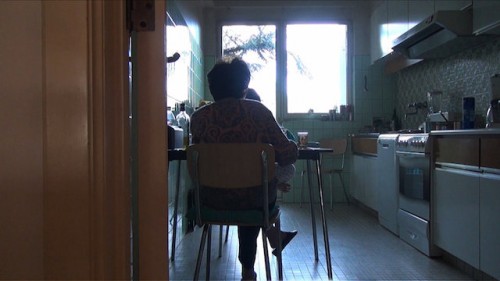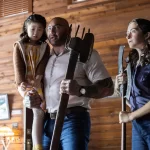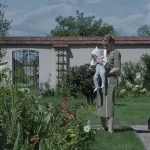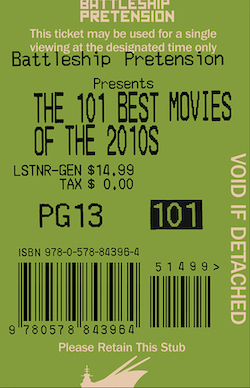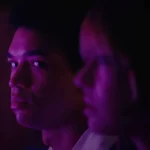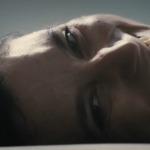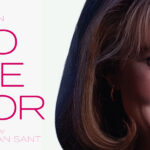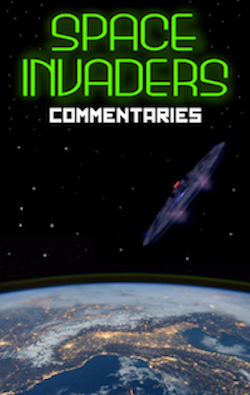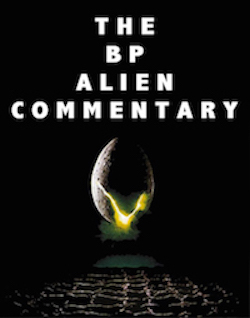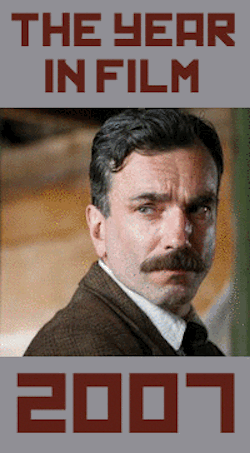Scott’s Top Ten of 2016
I struggled with the final form of this list, trying to truly ascertain the degree to which I loved much-beloved films. Usually I enjoy – and am quite comfortable with – including mostly personal choices that few others have on their lists, but this year I found myself rallying around a set of films very similar to many others’ favorites. But what can I say, we chose a good batch this year. As with last year, I will cheat and call attention to some honorable mentions to accompany my ten picks – films that share some similar concern, and are often equally as accomplished as those I did settle on – and I will truly cross the line in choosing one central honorable mention after this introduction.
But first, some runners-up – Aquarius, Elle, The Salesman, Julieta, and In the Shadow of Women deserve a place on anyone’s top ten.

Honorable mention – For the Plasma
I was rarely as confounded and delighted by the sheer rhythms of a film as I was Bingham Bryant and Kyle Molzan’s debut feature. Its wacky premise – a young woman goes to work with an old friend at a remote outpost, where she’s assigned to watch for forest fires but is actually using nature to predict shifts in the stock market – is introduced less than ten minutes into the film, but even that’s not the most destabilizing part of a film that takes stiff acting as its default and constantly-shifting camerawork as its mode of operation. Strangely touching in its portrait of how friends grow distant over time, the film gets at the madness that comes from finding meaning in every little thing, despite the fact that we must assume there’s some meaning in something or else we’ll go even madder.

10. La La Land
I’m a sucker for nostalgia acts. But I know I’m a sucker. And La La Land does, too. It has my number all the way down the line. It knows I’ll swoon to Ryan Gosling and Emma Stone dancing amateurishly in the moonlight. It knows a sudden flight into space will send my heart racing. It knows this because it knows how easily that nostalgia can be inhibiting. It knows how passion for art can blind a person to life’s more immediate pleasures. It knows the value of escape and what happens when we escape too often. And it does this without being scolding, or making a thesis statement. It makes the fantasy feel so real, with resonant, playful performances by Gosling and Stone that don’t send their characters down the dread archetype rabbit hole. They’re genuine; a little unusual and a little off-putting at times. But they love to singa. About the moon-a, and the June-a, and the spring-a.
See also (musical): Sing Street
9. Paterson
How to define oneself in the age of social media, self-crafted brands, and a follow-your-passion career culture? Ignore all that. Drive a bus. Write some poetry. Go to the movies with your sweetheart. Bond with a dog or a kid or a bartender or anyone. Live your life. Paterson is a rejection of contemporary culture without posing as a referendum on it. It posits the artistic life as an experience, not a career or even a calling. Simply to create, that is fulfillment enough.
See also (identity): The Lobster, Men Go to Battle
8. The Handmaiden
Simply put, I was never so entertained all year. This is the twistiest, turniest, silliest, pulpiest yarn 2016 spun, and I was enraptured and a little turned on for every giddy moment of it. This is not the only piece of entertainment that proved surprisingly romantic (we’ll get to the other in a second), but I was certainly not expecting a film that ends as this one does to provoke sentimentality. And yet!
See also (captive women required to befriend their captors): 10 Cloverfield Lane
7. American Honey
Early in Andrea Arnold’s fourth feature, Star (Sasha Lane) and Jake (Shia LaBeouf) meet-crude at a supermarket blasting Rihanna’s “We Found Love.” Arnold doesn’t resist the easy layer – Star and Jake are dirt-poor, and even in their routine haunts, a midwest supermarket feels a little hopeless. But the English filmmaker is also aware of how deeply in denial Americans can be about their circumstances. We align ourselves with pop culture, hoping the illusion of glamour embedded in a multi-millionaire’s pop hit will somehow rub off on us. Rather than damn her characters for this impulse, Arnold indulges them, taking seriously their aspirations, fears, and passions. By the time Star jumps aboard Jake’s van, abandoning her meager life for total uncertainty, we’re prompted to cheer her potential freedom rather than fear her likely safety. So begins the most empathetic, open-hearted, and free-wheeling hours I spent at the movies all year.
See also (misbegotten romance, beautifully filmed): Sunset Song
6. Love & Friendship
Love & Friendship introduces its large cast via a series of bewildering title cards that all but guarantees the first-time viewer will be left entirely uncertain as to who, exactly, anyone is in relation to the other. But that doesn’t matter. What makes writer/director Whit Stillman’s gambit work is that he also introduces us to their faces in the process. We might not remember who is whose brother-in-law, but we’ll recall an expression. A way of being. We’ll have some sense of how they operate, or fail to. That Whit Stillman would have a field day with the dialogue in a Jane Austen adaptation was practically a given, though his success in so doing is no less pleasurable as a result. But it’s his form that makes Love & Friendship so exquisite. The playfulness with onscreen text and sharpness of his editing complements the similarly-incisive wordplay, which his large cast (most notably Kate Beckinsale and Tom Bennett) run away with, enraptured.
See also (comedies of parent/child relations): Toni Erdmann
5. Certain Women
Kelly Reichardt’s triptych adaptation of short stories by Maile Meloy opens with a train plunging forward, indifferent and inexpressive. Part of the tension that unfolds over the course of these stories rests on ongoing, unpreventable forces. Sexism at work, cowardly corporations, handicaps, familial awkwardness, unexpected romantic feelings, education – these obstacles are sometimes difficult to even identify, let alone overcome. Laura Dern, Michelle Williams, Kristen Stewart, and Lily Gladstone bring decidedly different registers to Reichardt’s coiled tension, the shape of the film almost behaving like a giant, gradual exhale through their performances. The dialogue only occasionally makes overt statements about “the way women live today,” but if there’s an answer within, it’s one of grim acceptance. There are spaces one can carve, and many more that remain firm.
See also (triptych stories): Moonlight, Mountains May Depart
4. Our Little Sister
Hirokazu Koreeda continues his deceptively placid method of storytelling, this time adapting a long-running manga series (Umimachi Diary) about four sisters navigating their teens and twenties. They have no adult support system, their father having died and their mothers exhibiting little interest in raising them. Because his films are essentially plotless, Koreeda is often charged with passivity, or worse, too much positivity. As though the cinema is overwhelmed by authentic portraits of people trying to improve themselves and treat their loved ones more decently. Koreeda tackles this struggle in earnest, recognizing the temptation to divest oneself but celebrating the decision to recommit. These young women have each other, but they’re plagued by loneliness; it is well and good that they, and we, be reminded of the love that is nearby.
See also (growing up in new environs): The BFG
3. Silence
Truly the cumulation of a lifetime of work, as great a film as has ever been made towards the end of an artist’s life – this can stand alongside Fanny and Alexander, L’Argent, The Sacrifice, the Three Colors trilogy, An Autumn Afternoon, or any other late-career, summative work you might recall. Martin Scorsese has spent a lifetime learning, and while we’ve been lucky enough to see that mastery dispensed reflexively in genre films and prestige dramas, Silence reminds us that he’s still thinking through the medium, and indeed life itself. Having desired for thirty years to adapt Shusaku Endo’s 1966 novel about two Jesuit priests who seek to rescue their lost mentor from a hostile Japan, there is no sense that Scorsese settled on an approach to this story, He lets his curiosity drive him and his talent cushion him. Like nearly all of his films, Silence deals with pride, here threatening to eclipse one’s spiritual life and possibly damn dozens of others in the zeal the accompanies revelation. Andrew Garfield’s youthful naivete finds its ideal outlet, always certain and increasingly desperate as circumstances diminish his truth. His character’s ultimate sacrifice is tragic in part because he only glimpses one part of his tragedy. My tragedy – one I would venture to say is shared by a great many filmgoers, especially those who are dismissing its evident greatness – is that I can only glimpse part of this conflicted, endlessly conversant film. It never settles on one approach to its story, continually complicating what we are seeing, or have seen, or are about to see, right up through the final shot, which outright denies the button it seems to place on the film. Silence may very well race higher on this list the more I come to know it.
See also (faith tested by nature): The Voyage of Time, The Witch, The Shallows
2. Manchester by the Sea
As portraits of grief go, not enough spend time considering the many ways people try to avoid thinking about their grief. In Manchester by the Sea, Lee (Casey Affleck) drinks, watches sports, gets in fights, works, gets in arguments, and just tries to fall asleep before he’s left alone with his thoughts too long, all to avoid thinking about what he’s done and what’s happened to him. And that’s even before his brother (Kyle Chandler) dies, leaving him in charge of a teenager (Lucas Hedges) who doesn’t have any time for his grief, he’s got band practice to go to. Lee is not a great guy; he can be a bit of creep at times. But he’s sort of trying to be there for his nephew, and sort of trying to not get himself too attached, and sort of trying to deny the damaging influence his hometown is having on him just by being there all the damn time. And writer/director Kenneth Lonergan is terribly attuned to people’s triggers. He knows how to latch onto weird specific things that set people off at just the moment when a relationship was just sort of starting to work. And we’re all too caught up in this denial and these specific chores and these triggers to realize that suddenly we have grown attached to one another, and really want the best, but are too heartbroken to summon the courage. We can’t always be the people we want to be. It doesn’t take tragedy to know that; but it has a way of raising the stakes.
See also (denying trauma): The Edge of Seventeen, Billy Lynn’s Long Halftime Walk
1. No Home Movie
A first-person documentary with all the formal rigor its creator has become famous for, Chantal Akerman’s final film is a haunting, heartbreaking, and intimate portrait of her mother Natalia and their relationship. Made over the course of several years and culled from dozens of hours of footage Akerman shot with no real intent, No Home Movie traces conversations she has with her mother, Natalia, over Skype and in person. A few are very pointed, recalling family history and specific ways they’ve grown over the years. Some are completely superficial, about the weather and so forth. A surprising number are very funny; the experience of watching this was so much more joyful and life-affirming than I expected. And then, suddenly, there isn’t a lot of joy to be had. Natalia starts to get sick. Her once-irrepressible personality in subdued as she spends her days lying down. Other rifts grow – Chantal’s younger sister, Sylviane, arrives and finds a good many avenues to mock Chantal and give voice to a different side of Natalia, who feels her eldest daughter doesn’t share the most important things in her life. As with her most famous fiction work – most notably Jeanne Dielman – Akerman chooses her camera positions to maximize what goes unseen. We’ll see an empty room for the better side of a minute before someone will walk through. A conversation will be filmed from behind one person, obscuring both parties. Akerman didn’t know she was making a film about her mother’s final days – she just, as she always did, filmed the world around her, hoping to capture a sense of her concerns in the process. She ended up with one of her finest films, which draws together so much of what she explored throughout her career, offering no final resolutions or declarations. We just have to live as always, steadfast to the winds that seek to tear us down.
See also (mothers and daughters): The Meddler










